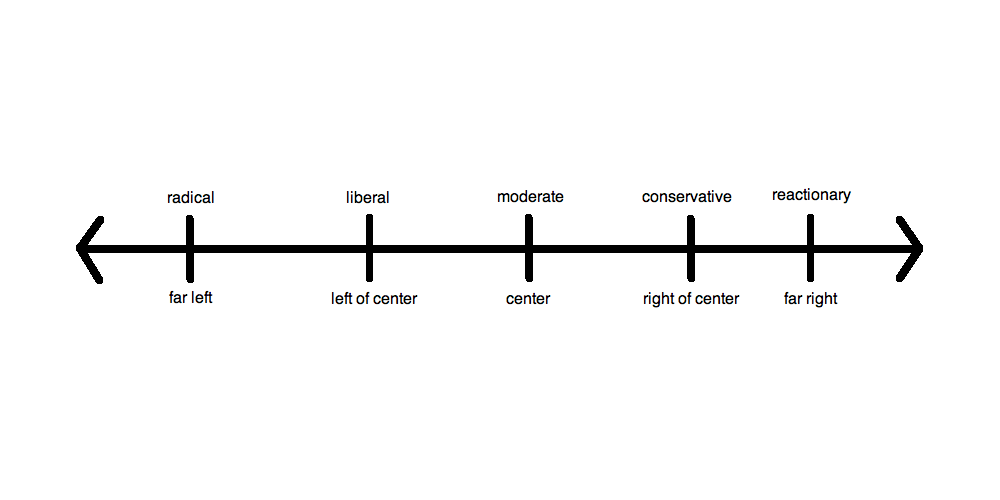Political Dichotomy Assessment: Where The Other Tests Fall Short
This was discussed earlier in the Introduction document, but one of the main goals of this project is to create a qualitatively distinguished model of politics as opposed to a quantitatively distinguished one. This is important because all current major models/tests still rely on quantitative methodology, which ends up severely handicapping their usability.
Left/Right Spectrum

As this model was born out of the French Revolution, it distinguishes people between those who oppose progress and those who support progress; during that time period it was used to distinguish those who supported the Revolution and those who supported the monarchy.
The issue with this is that the definitions of progress tend to be highly relative, and in some cases subjective. What can be considered “left” or “right” is still dependent on what the individual or larger society as a whole considers to be social progress. When we have different individuals, different time periods, and different cultures being cross-referenced, this model finds itself far too situational to be of any use.
If you're interested in a more in-depth analysis on why this is an issue, I'd recommend checking out Whig History by Herbert Butterfield.
Political Compass and 8Values/PolitiScales

Unsurprisingly, the problem wasn't solved. If anything, tacking on another axis only served to bring up more questions. Who is authority referring to in this case? One can be authoritarian but believe in that authority being enforced by someone other than the state; the opposite is true too, you can be libertarian in a non-statist sense.
We continued to get more and more models that slapped on more metrics: first there was the aptly named 8Values, but when that didn't work out, the creators of PolitiScales decided to double the axes.
I know some people swear by these tests, but the issue is that the scores don't really hold much application outside of the chart itself. If you just look at the ideologies that 8Values suggests, you'll see almost all of them are either vague, incorrect, or in some cases, completely made-up terms.
Questions
Keep in mind all of the above is just me discussing the final result and the presentation, we haven't even gotten to the issues with the questions on these tests yet.
Interestingly enough, despite all the novel ways they come up with to try and present information, we still end up with the exact same structure for how questions are asked and evaluated.

Often times a series of statements are given, and for each statement, the participant is asked to give a rating of how strongly they agree with it. This answer is then taken, converted to a number, then either added or subtracted to a score on one axis.
For example, answering “Strongly Agree” to the above question may give me +3 points on the authoritarian/libertarian axis, while answering “Strongly Disagree” may give me -3 points on the authoritarian/libertarian axis.
This method would be fine, assuming the question is relevant to every participant and could only be answered in two ways; often times, however, that isn't the case. For a lot of these questions, someone could take a position that would lead them to be neither, against, for, or even neutral towards a statement because the statement would make an assumption that doesn't apply to them.
Quantitative Versus Qualitative
The reason all these tests have to rely on scoring systems and linear questions is because they all assume a quantitative model of ideology. That one's beliefs are based upon the intensity of a position they hold, how strongly they feel about something.
And this is why all of these models completely fall apart when they have someone who holds a strong position, but still a position that the test doesn't account for. It's not even that radical positions become discouraged by this model, but rather instead that they become inconceivable, outside the boundaries of what can even be imagined much less supported.